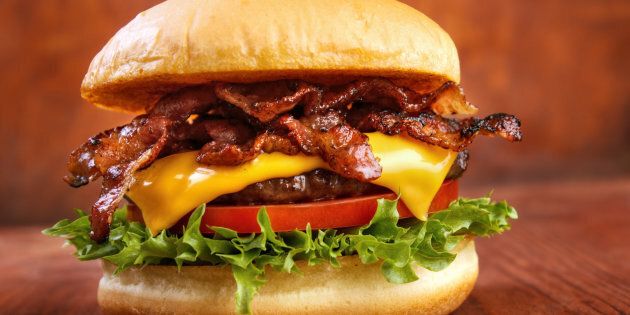
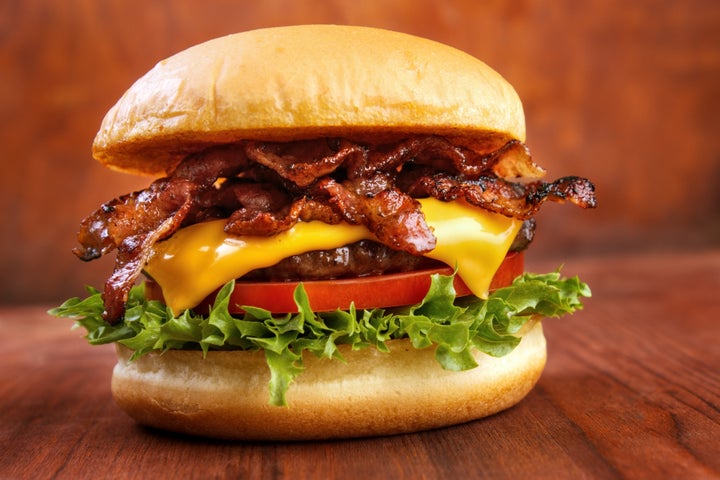
Here's some news that might make you gulp.
The Center for Biological Diversity, an environmental nonprofit, wants you to know how food production affects wildlife. Piggybacking on the government’s recent redesign of nutrition labels on food packing, the group has created their own “extinction labels,” which detail what wildlife you’re endangering when you chow down on bacon, beef and chicken.
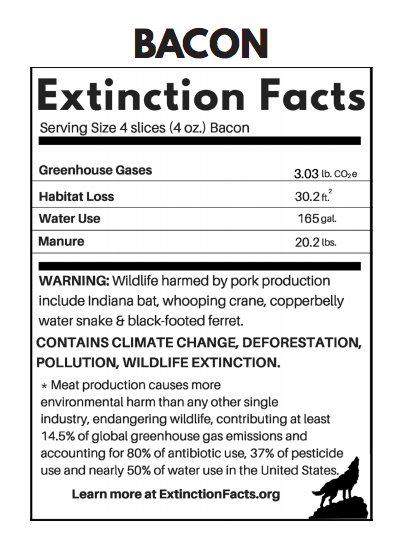
“Meat production is one of the single most destructive industries on the planet, and our diets are putting enormous pressure on wild species who are already in harm's way,” Jennifer Molidor Ph.D, senior food campaigner for Center for Biological Diversity told The Huffington Post.
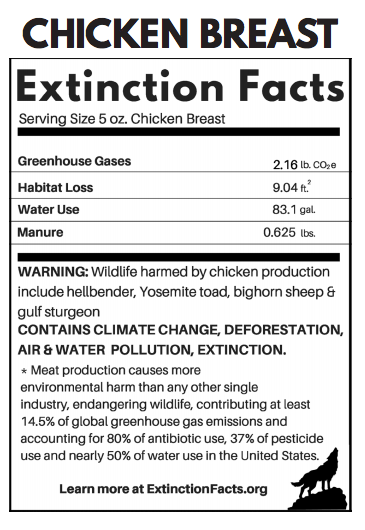
Species included on the organization’s labels — which are part of its Take Extinction Off Your Plate campaign — include wolves, sage grouse and bison, the latter of which is near threatened. The labels also include endangered species such as black-footed ferrets, copperbelly water snake, Indiana bats and hellbenders and also lists polar bears which are vulnerable.
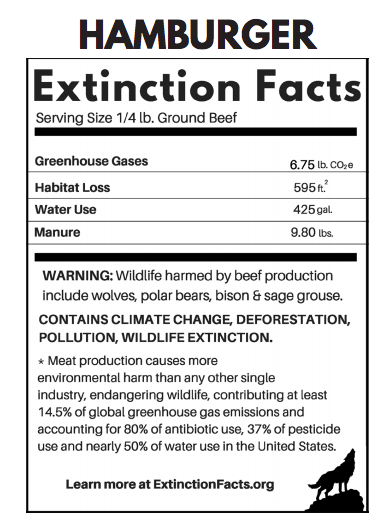
It may be hard to correlate a delicious cheeseburger with the death of a wolf, but according to a 46-page list released by the Obama administration, Wildlife Services killed more than 2.7 million animals in order “to resolve wildlife conflicts to allow people and wildlife to coexist” in 2014 alone. This included the USDA killing 322 wolves and 61,702 coyotes in order to protect livestock.
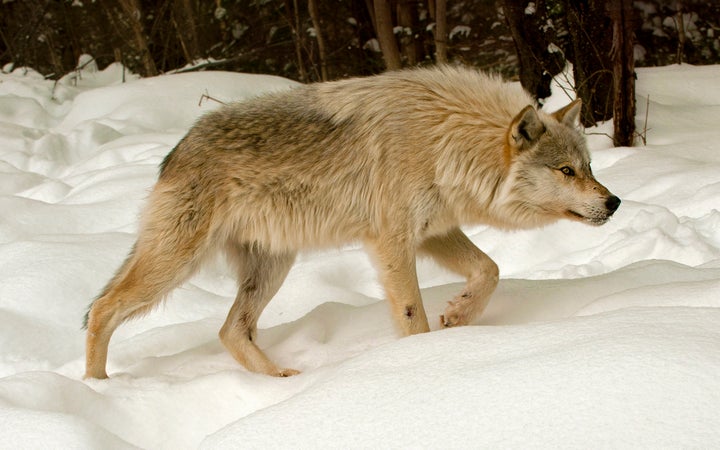
Yet, killing predators to protect livestock was proven by one study on cougars to actually increase depredation.
“Killing older resident cats resulted in a huge influx of teenage male cats,” Rob Wielgus, a wildlife ecologist who headed the study told Harpers. “The teenage males are the livestock depredators. The older cats were cops that kept the younger troublemakers out.”
Wielgus published a similar study in 2014 involving wolves and found similar results.
“We’ve now seen this in grizzlies, black bears, cougars, leopards and wolves. Social disruption is a huge negative effect. Why is the livestock lobby unhappy with this? Because they want to kill predators. They cannot believe the scientific evidence. They’re convinced that the only good predator is a dead predator,” he told Harpers.
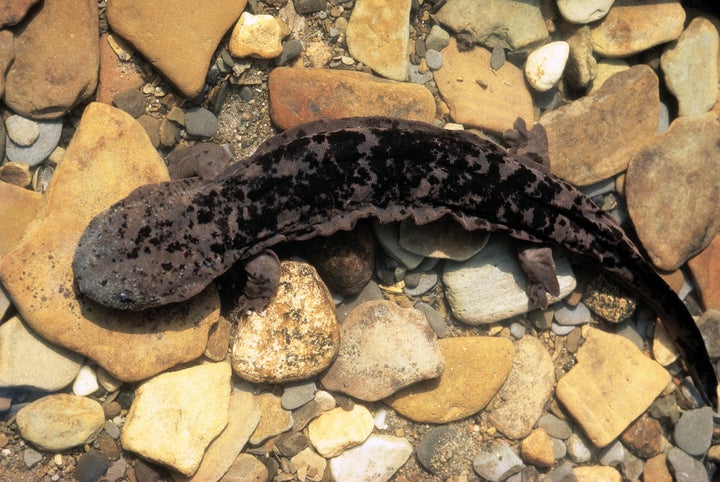
As for non-predatory species that are affected by meat production, Molidor explains that factors such as pollution from toxic manure, pesticides and factory farm runoff, pesticides get in the waterways, affecting species like hellbenders and copperbelly water snakes.
“Others lose habitat that is eroded, damaged, or — like polar bears — changed by climate change,” Molidor told HuffPost. “Which is hugely impacted by animal agriculture.”
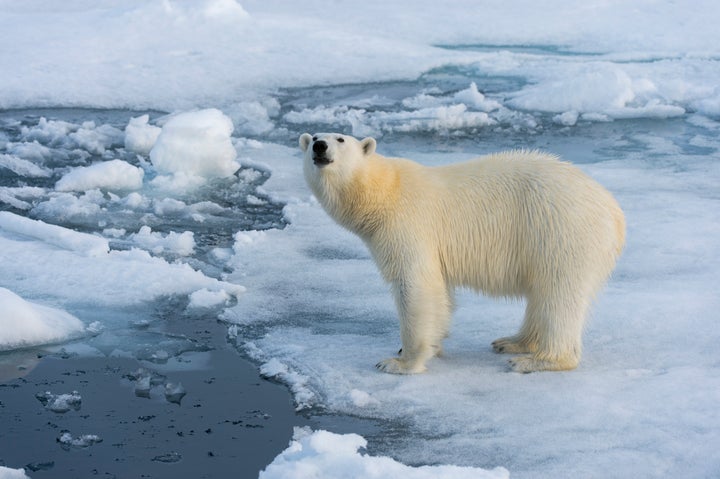
The labels also include information on how much green house gases were emitted, manure was created and habitat and water loss during the production of each serving of meat. Molidor claims The Center for Biological Diversity got these statistics after she and a team “crunched numbers” from scientific reports, peer-reviewed studies and the USDA's own numbers.
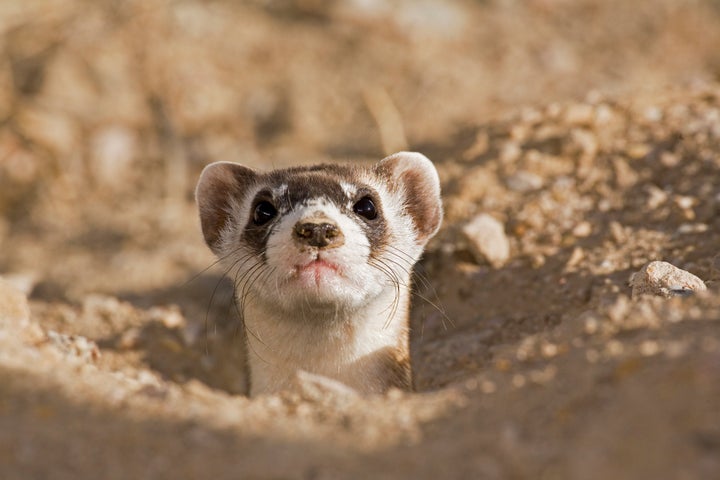
The labels also include information on how much green house gases were emitted, manure was created and habitat and water loss during the production of each serving of meat. Molidor claims The Center for Biological Diversity got these statistics after she and a team “crunched numbers” from scientific reports, peer-reviewed studies and the USDA's own numbers.
Yet the labels are just a fraction of what the Take Extinction Off Your Plate campaign is trying to communicate and accomplish.
“Our population and the demand for meat is increasing while at the same time the impact of our food choices is also growing to the point where it not only threatens wildlife and the environment but also food security and our ability to produce food,” Molidor said.
The campaign’s site also features wildlife-friendly recipes and a petition for the USDA to issue a public statement and a plan to make the American diet more sustainable. For more information and to sign the petition, check out its site.
